Do you ever notice how when you draw a bead on something—an idea, a desire—you begin to notice it everywhere, in everything you do, as if it's coming at you through some algorithm of design? Google's ad targeting and OkCupid's match engines, as elegant as they've become, ain't got nothing on the human mind, much less the cosmos.
I've made a decision: I want to practice and stretch and figure out how to work better in pairs and higher multiples—from work groups to cultural movements. I freelance, and it has given me everything I wanted: freedom, autonomy, meaning, a chance at mastery. I'm good at solo work, which has long been my preference. But lately, I've been thinking about the power that comes from collective thinking, collective creativity. Two heads can create better together than either one alone; it's a matter of processing power. I never used to believe that.
For a long time, I was absolutely convinced that when two or more gather, stuff gets fucked up. I was pretty locked in on that notion, and whenever I said it, I got a lot of validation. But I'm sensitive to ideas that become leashes—to that murky moment when your beliefs begin to own you—so I try to maintain an internal checks and balance system. It looks like this: if I feel myself becoming roped to an idea or an ideology (stars forbid!), especially as they relate to other people, I encourage myself to think bigger, and then to think bigger still.
So I decided to test my theory, and here's what I came to:
Maybe collective force is potential and outcome depends on a measure of intention—something we can plan for and practice. To make a piece of writing, a film project, a work deliverable, anything at all, immensely better through collaborative effort, you have to get really good at practicing intentionality ... with other people. Co-creating a vision, collaborating on work and ideas, staying honest and vulnerable and real.
Sure, stuff will get messy when you bring others on board—but you will probably be the one messing them up.
Perspective shift: what can we learn from social disruption? Is it possible that this tension can make us more creative? Can it bring us closer to ourselves and other people in the process?
Imagine a prefab building, corrugated metal with a biggo wooden steeple. Inside, is a hoard and the hoard has their eyes closed, their hands in the air. They're loosely swaying to poppy-churchy music. Some are speaking in tongues. A man with a tan is wearing gold nugget rings crowded with 1mm diamonds and a so-so Canadian suit. He shoves a willing woman in the forehead and she passes out cold. Her wig slips. When she wakes up moments later, she's cured! No more lisp, no more limp, no more lust—whatever vexed her left her, and maybe not because she was suggestible, but because she was open.
These people believe in their vision and are gathered around purpose. They call their purpose Fellowship or The Word or the Love of the Almighty, but it could be anything. They're accessing something I admit to having mocked, but didn't understand. They are fallible, sure, but they are linked. Theirs is a shared reality built from the meaty ground of resonance. It hums loud enough to rattle; only resistance breaks its momentum.
There's another room: this one is in the fourth dimension: cyber. Twitter feeds parse and bloom like a fractal jungle. Would-be comedians and exhibitionists and mommy bloggers. This room is evidence that our tools for social order have evolved with our technologies, but not surpassed them. (Public shaming? Still around!)
Here, fear spreads like fire, ideas like smoke—clouded contagion. Emotion is infectious—even judgment is catching—but so too is joy and optimism and creativity. That's why it's called a "spark"; you can ignite it.
Maybe in the future—not too far from now—we'll wake up connected, literally neuronally linked, to other people. At some point in the grand scheme, atoms linked to form molecules linked to form cells linked to form organs linked to form progressively complex entities. Now those seeming independencies are linking across the planet in what amounts to an evolutionary eye-blink; technology is advancing exponentially and our technology is an extension of us. There is nothing that is not natural, not of this world—no matter how out of this world it is. Maybe we'll become beings of two, or four, or 50,000,000. Maybe we already are.
Nothing is so powerful as the cohesive collective. Put a diamond-tipped laser on the collective optic lens, and we can 3D print whatever reality we dream up.
So look alive, babies. What will we create?
Who will we become?



